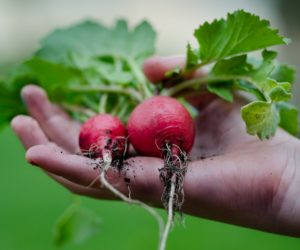Stinging nettle is a hardy perennial native to Europe, Asia, northern Africa and western North America.It spreads by both seed and rhizomes, which means it’s fairly invasive given the opportunity. It prefers moist rich soil in partial shade, but if there’s enough moisture, it will grow in full sun as well. Larger animals tend to avoid it due to its painful… Continue Reading…
Historically, the radish was almost as important in the leech’s repertoire as it was in the kitchen. According to Dioscorides, it is useful as a laxative, a diuretic and an emetic.There is some discussion as to whether the ancient Egyptians employed it. Some say that they paid their workers a wage of radishes, garlic and onions, deliberately supplying the workers building… Continue Reading…
The radish has a very long history in the kitchen. Its characteristic bite can be played up or down, depending on your taste and how you prepare it. Its use was first documented in the third century BCE and it was probably around before that. In the manuscript Cookery and Dining in Imperial Rome, written in the 4th or 5th century… Continue Reading…
RadishRaphanus SativusThe cultivation of the radish hasn’t changed greatly over the last several centuries although medieval cooks made more thorough use of it than most of us do. Since the radish prefers colder temperatures to germinate in, it’s one of the first fresh vegetables available in the spring. Start them as soon as the soil is workable (you can start them… Continue Reading…
I was five. My great-grandparents passed away and in the Fall of that year my family moved from the small suburban apartment that we lived in to the small farm that they had left behind. They were both avid gardeners and left us a wonderland of beautifully unfussy landscaping and a great variety of unusual and beautiful flowers and shrubs which… Continue Reading…

